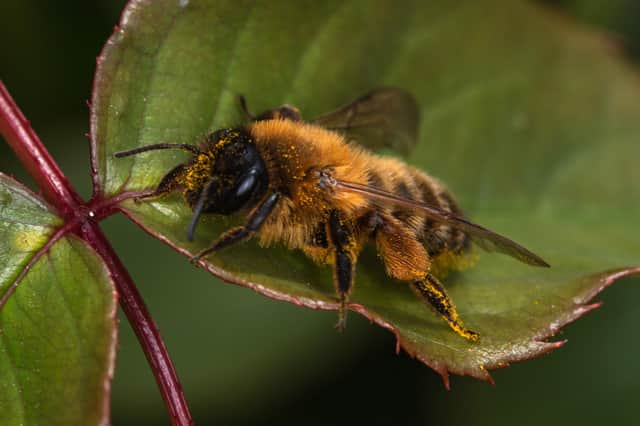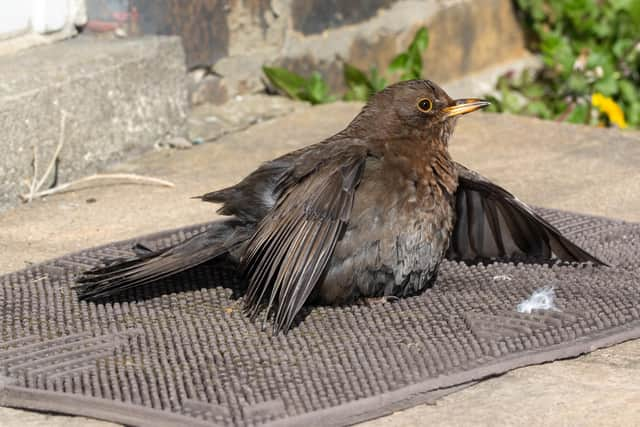NATURE NOTES: Discovering the nature on your doorstep


Whilst this terrible virus wreaks havoc on the world, we find ourselves confined to our homes for the safety of ourselves and others. Those of us that are lucky enough to have gardens are spending more time in them than ever before and
we are making the most of our opportunity to walk or cycle from our homes for exercise.
Advertisement
Hide AdAdvertisement
Hide AdRegular readers of my Nature Notes articles will know that I usually head for Druridge Bay to watch wildlife – my local patch, which is about four miles from my home but is just out of reach on foot from home.


Well, my local patch just got a bit more local.
I’m using this opportunity to explore the area closer to home to see what wildlife I can find there. I live less than a mile from the sea and within walking distance of an hour or so I have woodlands, fields, small ponds and the ‘dene’ to explore. I am very lucky.
I’ve enjoyed seeing some woodland birds that I rarely or never see at Druridge Pools.
Birds like Jay, Nuthatch, Treecreeper and Willow Tit for example and woodland plants too, many that are indicative of ancient woodland like Dog’s Mercury, Lesser Celandine and Wood Anemone.
Advertisement
Hide AdAdvertisement
Hide AdA recent knee injury has reduced the size of my patch even further and I am now enjoying the wildlife ‘on my doorstep’ - quite literally, so I’ve spent more time in my garden. It’s a vegetable garden, more like an allotment really, but it’s amazing what can be found there.
I’ve enjoyed getting into macro photography – taking photos of the tiny bees, hoverflies, spiders and wasps that I can find. You don’t need expensive kit these days either, most smart phones have good cameras that can take close-up photos of beasties and creepy-
crawlies. The slo-mo video options on phones are amazingly good at capturing things like bees and hoverflies in flight.
When you’ve managed to take a few photos, what then? How do you identify what you’ve seen?
Advertisement
Hide AdAdvertisement
Hide AdThe internet and social media are great places to help you to identify and record your sightings. You can download apps like iNaturalist (iNaturalist.org) or iRecord (www.brc.ac.uk/irecord/) where you can identify and record your sightings and there are groups on Facebook for almost everything from birds to bees and flies. The experts on
these groups are generally happy to give advice and support to beginners.
Some of my birdwatching friends have taken garden bird ‘watching’ to the extreme - ‘noc-mig’, short for nocturnal migration. Many bird species, especially ducks, waders and other waterbirds on migration travel by night as it’s safer for them to do this. When they fly at night they often call to each other and this is what the birdwatchers are listening out for.
Earlier this month, birdwatchers from across the country heard groups of seaducks called Common Scoters migrating overhead, miles from the sea. These ducks had left the Irish Sea or further south and west and were headed for the North Sea and beyond and the
Advertisement
Hide AdAdvertisement
Hide Adshortest route is overland. These seaducks seemed to use ‘flyways’ like the Tyne Valley from the Solway to the North Sea for example.
Some birdwatchers have even bought some kit that records birds calls over their houses whilst they sleep – extreme noc-migging!
I’m not suggesting that you should go to these lengths to record wildlife on your doorstep but I would encourage you to take this time to see what you can find in your garden or on your daily exercise in the local park or from the footpaths close to home and record it on
your smartphone or even better, go old-school and sketch it in a book. Most of all, just get out there and enjoy it while you can, but remember, stay safe and protect the NHS!
Twitter @Ipin_by_the_sea